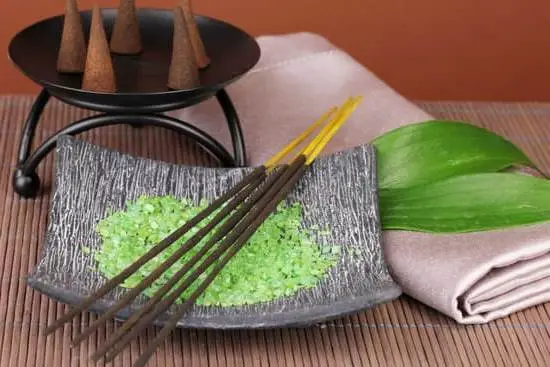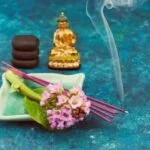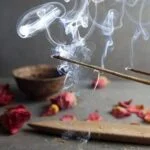Are you looking to learn how to mix aromatherapy oils? Aromatherapy is a practice that dates back thousands of years and involves using natural plant extracts to promote health and well-being. In this article, we will explore the art of mixing aromatherapy oils, from understanding the different types of oils to creating your own custom blends.
Aromatherapy oils are highly concentrated plant extracts that have been used for their therapeutic properties for centuries. From promoting relaxation and reducing stress to easing headaches and promoting better sleep, aromatherapy oils offer a wide range of benefits for both the mind and body. In this section, we will delve into the world of aromatherapy oils and explore their many benefits.
Before diving into the process of mixing aromatherapy oils, it’s important to have a solid understanding of the different types of oils available. There are numerous essential oils with unique properties and scents, each offering its own set of benefits. By familiarizing yourself with the various types of aromatherapy oils, you can begin to tailor your blends to achieve specific therapeutic effects.
Understanding the Different Types of Aromatherapy Oils
When it comes to understanding the different types of aromatherapy oils, it’s important to first recognize that there are three main categories of essential oils: top notes, middle notes, and base notes. Each category has its own unique properties and benefits, making them suitable for different uses in aromatherapy.
Top Notes
Top notes are the most volatile of the essential oils, meaning they evaporate quickly. These oils tend to have a light, fresh aroma and are often used to create an uplifting or invigorating atmosphere. Some common top note essential oils include lemon, peppermint, and eucalyptus.
Middle Notes
Middle notes have a balancing effect on the blend of aromatherapy oils. They often have a warm and intense aroma that serves as the heart of the blend. Oils such as lavender, chamomile, and rosemary are popular choices for middle note essential oils.
Base Notes
Base notes are typically heavy and rich in fragrance, providing depth and stability to the blend. These oils evaporate slowly and have a long-lasting scent. Base note essential oils like sandalwood, cedarwood, and patchouli are commonly used for their grounding and calming effects.
Understanding the different types of aromatherapy oils is crucial for creating well-balanced blends that serve specific purposes. By knowing how each type of oil interacts with others, you can effectively mix aromatherapy oils to achieve your desired results. In the following section, we will delve into a step-by-step guide on how to mix aromatherapy oils properly.
Essential Tools and Supplies Needed for Mixing Aromatherapy Oils
When it comes to mixing aromatherapy oils, having the right tools and supplies is essential for creating the perfect blend. Here are some of the key items you will need to ensure that you can mix your oils safely and effectively.
High-Quality Carrier Oils
One of the most important supplies you will need for mixing aromatherapy oils is a selection of high-quality carrier oils. Carrier oils are used to dilute essential oils before they are applied to the skin, and they also help “carry” the essential oils into the skin. Some popular carrier oils include jojoba oil, sweet almond oil, and coconut oil. It’s important to choose a carrier oil that is suitable for the type of blend you want to create.
Essential Oil Bottles and Droppers
To mix your aromatherapy oils properly, you will need small bottles or vials to store your blends. Dark-colored glass bottles are best for storing essential oils, as they help protect the oils from light and air, which can cause them to degrade. Additionally, using droppers or pipettes will help you measure out the precise amounts of each oil when creating your blends.
Labels and Marker
Labeling your aromatherapy oil blends is crucial for keeping track of what each bottle contains. Using waterproof labels or adhesive label paper can help prevent smudging or smearing when handling the bottles. A permanent marker is also handy for writing down important information such as the date when the blend was made, the ingredients used, and any safety precautions or usage instructions.
By ensuring that you have these essential tools and supplies on hand, you can create your own custom aromatherapy oil blends with ease and confidence while following safety guidelines on how to mix aromatherapy oils.
Safety Precautions and Guidelines for Working With Aromatherapy Oils
Working with aromatherapy oils can be a rewarding and therapeutic experience, but it’s essential to prioritize safety when mixing and using these potent substances. While aromatherapy oils offer numerous health benefits, they are highly concentrated and should be handled with care to avoid adverse reactions or accidents. This section will provide valuable information on the safety precautions and guidelines for working with aromatherapy oils, ensuring that you can enjoy their benefits without putting your well-being at risk.
Before delving into how to mix aromatherapy oils, it’s crucial to understand the potential risks associated with their use. Aromatherapy oils can cause skin irritation, allergic reactions, and even respiratory issues if not used properly.
As such, it’s essential to perform a patch test before applying any new oil directly onto the skin and to always dilute them with a carrier oil before use. Furthermore, pregnant women, individuals with certain health conditions, and pets should exercise caution or avoid using certain types of aromatherapy oils altogether.
In addition to understanding the potential risks, there are specific guidelines for handling and storing aromatherapy oils to ensure their longevity and maintain their potency. Proper storage in dark glass bottles in a cool, dark place is important to prevent degradation due to exposure to light or fluctuations in temperature.
Furthermore, keeping essential oils out of reach of children and pets is vital, as accidental ingestion can lead to poisoning. By following these safety precautions and guidelines diligently, you can create a safe environment for practicing aromatherapy while reaping its many benefits responsibly.
| Safety Precautions | Guidelines |
|---|---|
| Perform patch tests before use | Properly store in dark glass bottles |
| Dilute with carrier oil before use | Keep out of reach of children and pets |
| Exercise caution during pregnancy or specific health conditions | Avoid direct exposure to light or extreme temperatures |
Step-by-Step Guide on How to Mix Aromatherapy Oils Properly
Aromatherapy oils have been used for their therapeutic properties for centuries, and learning how to mix them properly can open up a world of benefits for your physical and mental well-being. Whether you’re looking to create a relaxing blend for stress relief or an invigorating mix for increased energy, understanding the process of combining aromatherapy oils is essential. In this guide, we will walk you through the step-by-step process of mixing aromatherapy oils properly.
First and foremost, it’s important to understand the different types of aromatherapy oils and their individual properties. Some oils are known for their calming effects, while others are recognized for their uplifting qualities. By familiarizing yourself with the various aromatherapy oils available, you can begin to envision the kind of blend you would like to create and better understand which oils complement each other.
Once you have selected the essential oils you want to work with, gather the necessary supplies including dark glass bottles for storage, dropper tops or pipettes for accurate dispensing, and a notebook to record your blends. It’s crucial to label your bottles with the names of the oils used in each mixture to avoid confusion later on. Additionally, using dark glass bottles helps protect the integrity of the oils by shielding them from light exposure.
Creating balanced blends that achieve your desired results involves understanding how different aromas interact with one another. Start by selecting a base note oil, which provides the foundation and longevity of your blend. Next, add middle note oils, which harmonize the fragrance and balance out the base note.
Finally, include top note oils that provide the initial impression and add complexity to your blend. By following these guidelines and experimenting with different combinations, you can craft custom aromatherapy oil blends tailored to your unique preferences and needs.
| Step | Description |
|---|---|
| 1 | Understand the properties of different aromatherapy oils |
| 2 | Gather supplies including dark glass bottles and dropper tops |
| 3 | Create balanced blends using base note, middle note, and top note oils |
Tips and Tricks for Creating Perfect Aromatherapy Oil Blends
When it comes to creating perfect aromatherapy oil blends, there are a few tips and tricks that can help you achieve the desired results. Here are some recommendations to keep in mind:
1. Use high-quality oils: The quality of your aromatherapy oils will greatly impact the final blend. Be sure to use pure, unadulterated essential oils from reputable sources to ensure the best results.
2. Consider the therapeutic properties: Each essential oil has its own unique therapeutic properties. When creating a blend, consider the specific benefits you’re looking to achieve and choose oils that complement each other in terms of their therapeutic effects.
3. Start with small batches: It’s always best to start with small batches when experimenting with aromatherapy oil blends. This allows you to test the blend and make any necessary adjustments before committing to a larger quantity.
4. Keep track of your recipes: Once you’ve created a successful aromatherapy oil blend, be sure to keep track of the recipe for future reference. This will allow you to recreate the blend in the future or make any modifications as needed.
Overall, understanding how to mix aromatherapy oils requires patience, experimentation, and a good understanding of the properties of different essential oils. By keeping these tips and tricks in mind, you can create perfect aromatherapy oil blends that cater to your individual needs and preferences.
Popular Aromatherapy Oil Blends and Their Uses
Aromatherapy oils are versatile and can be blended together to create synergistic effects that enhance their individual benefits. Whether you are looking to uplift your mood, reduce stress, or alleviate physical ailments, there are countless combinations of aromatherapy oils that can help you achieve your desired results. Here are some popular aromatherapy oil blends and their specific uses:
- Lavender and Peppermint: This refreshing blend is perfect for relieving headaches and migraines. Lavender is known for its calming properties, while peppermint has a cooling effect that can help soothe tension.
- Lemon and Eucalyptus: This energizing blend is great for clearing the airways and promoting respiratory health. Lemon provides a citrusy aroma that uplifts the spirit, while eucalyptus is known for its decongestant properties.
- Rosemary and Frankincense: This invigorating blend is ideal for improving focus and concentration. Rosemary has stimulating properties that can enhance cognitive function, while frankincense promotes a sense of peace and relaxation.
These are just a few examples of popular aromatherapy oil blends, but the possibilities are endless when it comes to creating custom blends tailored to your specific needs.
When learning how to mix aromatherapy oils, it’s important to start with small quantities and experiment with different combinations to find what works best for you. Keep in mind that each person may respond differently to various essential oils, so it’s essential to pay attention to how your body reacts to each blend.
In addition to using these blends in a diffuser or inhaling them directly from the bottle, you can also incorporate them into homemade skincare products such as lotions, bath salts, or massage oils for an added therapeutic experience. With some creativity and experimentation, you can discover unique combinations that cater to your individual preferences and wellness goals.
Conclusion and Final Thoughts on the Art of Mixing Aromatherapy Oils
In conclusion, the art of mixing aromatherapy oils is a delightful and rewarding practice that offers numerous benefits for physical, emotional, and mental well-being. Through this article, we have explored the various types of aromatherapy oils and their unique properties, as well as the essential tools and safety precautions necessary for blending oils.
Additionally, we have provided a step-by-step guide on how to mix aromatherapy oils properly, along with helpful tips and tricks for creating perfect oil blends.
It is important to remember that when delving into the world of aromatherapy oils, patience and experimentation are key. Each individual’s preferences and needs are unique, so it may take some trial and error to find the perfect blend that resonates with you. However, with dedication and a basic understanding of the principles behind aromatherapy, anyone can learn how to mix aromatherapy oils effectively.
Lastly, as you continue your journey in exploring the world of aromatherapy oils, do not hesitate to seek inspiration from popular oil blends and their uses. Remember that there are endless combinations of scents and therapeutic properties waiting to be discovered. Whether you are seeking relaxation, focus, or relief from certain ailments, there is an ideal blend out there for everyone. Embrace the creative process and enjoy the many benefits that come with mastering the craft of mixing aromatherapy oils.
Frequently Asked Questions
What Is the Best Dilution Ratio for Essential Oils?
The best dilution ratio for essential oils depends on the specific oil and the intended use. A general guideline is to use a 2% dilution, which means adding 12 drops of essential oil to 1 ounce of carrier oil.
How Do You Dilute Essential Oils for Aromatherapy?
To dilute essential oils for aromatherapy, you can simply mix them with a carrier oil like jojoba, coconut, or almond oil. The dilution ratio will depend on the individual’s age, health, and the purpose of the aromatherapy treatment.
What Is the Best Carrier Oil to Mix With Essential Oils?
The best carrier oil to mix with essential oils varies depending on personal preferences and skincare needs. Popular options include jojoba oil for its similarity to skin’s natural oils, coconut oil for its moisturizing properties, and sweet almond oil for its ability to penetrate the skin deeply without leaving a greasy residue.

Are you looking for a natural way to improve your health and wellbeing?
If so, aromatherapy may be the answer for you.





